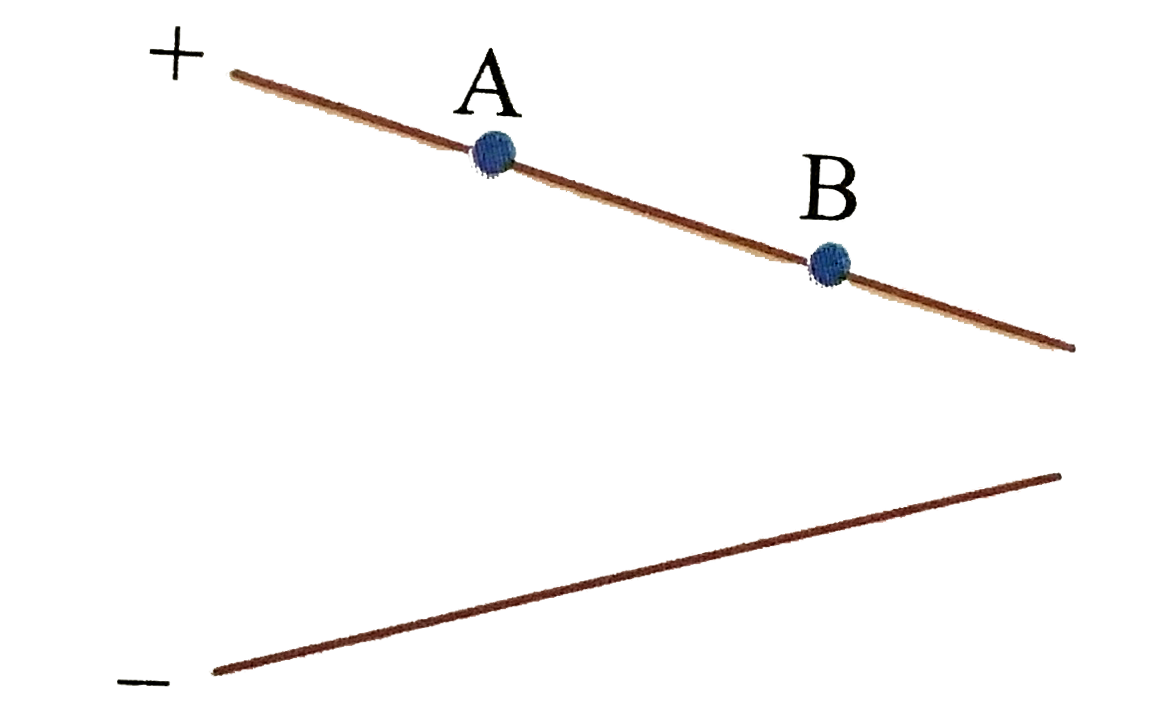Each plate of a parallel plate capacitor has a charge q on it. The capacitor is now connected to a battery. Now,
the facing surfaces of the capacitor have equal and opposite charges
the two plates of the capacitor have equal and opposite charges
the battery supplies equal and opposite charges to the two plates
the outer surfaces of the plates have equal charges
The correct Answer is:A, C, D
Step by step video, text & image solution for Each plate of a parallel plate capacitor has a charge q on it. The capacitor is now connected to a battery. Now, by Physics experts to help you in doubts & scoring excellent marks in Class 12 exams.
Updated on:21/07/2023Topper's Solved these Questions
- CAPACITORSBOOK - HC VERMACHAPTER - CAPACITORSEXERCISE - Exercises
66 Videos
- CAPACITORSBOOK - HC VERMACHAPTER - CAPACITORSEXERCISE - Exercise
2 Videos
- CAPACITORSBOOK - HC VERMACHAPTER - CAPACITORSEXERCISE - Objective 1
12 Videos
- BOHR'S MODEL AND PHYSICS OF THE ATOMBOOK - HC VERMACHAPTER - BOHR'S MODEL AND PHYSICS OF THE ATOMEXERCISE - Exercises
46 Videos
- DISPERSION AND SPECTRABOOK - HC VERMACHAPTER - DISPERSION AND SPECTRAEXERCISE - Exercises
11 Videos
Similar Questions
A parallel plate capacitor has plate A and separation d between the plates. The capacitor is connected to a battery of emf V. (a) find the charge on the capacitor. (b) the plate separation is decreases to d/2. Find the extra charge given by the battery to the positive plate. (c) work done in reducing separation between plates.
View SolutionThe plates of parallel capaitor are given charges +4Q and −2Q. The capacitor is then connected across an uncharged capacitor of same capacitances first one (=C). Find the final potential difference between the plates of the first capacitor.
View Solution
Knowledge Check
A parallel plate capacitor C has a charge Q. The actual charges on its plates are
AQ,QBQ/2, Q/2CQ,-QDQ/2. - Q/2The plates of a parallel plate capacitor are charged by a battery and the battery is disconnected after the charging. Now, the plates are placed as shown in the figure. Then (plates are not parallel to each other).
 .Athe surface charge density is greater at point ABthe surface charge density is greater at point BCthe potential at points A and B is sameDthe potential at point A is greater
.Athe surface charge density is greater at point ABthe surface charge density is greater at point BCthe potential at points A and B is sameDthe potential at point A is greaterA parallel plate capacitor is charged. If the plates are pulled apart
Athe potential difference increasesBthe capacitance increasesCthe total charge increasesDthe charge and the potential difference remain the same
Parallel Plate Capacitor |Energy Stored In A Charged Capacitor
View SolutionShow that the force on each plate of a parallel plate capacitor has a magnitude equal to 12QE, where Q is the charge on the capacitor, and E is the magnitude of electric field between the plates. Explain the origin of the factor 12.
View SolutionShow that the force on each plate of a parallel plate capacitor has a magnitude equal to (½)QE, where Q is the charge on the capacitor, and E is the magnitude of electric field between the plates. Explain the origin of the factor ½.
View SolutionSpace between the plates of a parallel plate capacitor is filled with a dielectric slab. The capacitor is charged and then the supply is disconnected to it. If the slab is now taken out then
View SolutionThe plates of a parallel plate capacitor with no dielectirc are connected to a volatage source. Now a dielectric of dielectric constant K is inserted to fill the whose space between the plates with voltage source remainign connected to the capacitor-
View Solution
